Enhancement work on theRoman amphitheater Arena di Verona began in 2024 as part of the national Art Bonus program dedicated to the protection of cultural heritage. The operation, with a total value of 14 million euros, was entirely financed through liberal donations. UniCredit S.p.A. contributed the largest sum, amounting to 7 million euros, followed by Fondazione Cariverona with 2 million. Fondazione Cassa di Risparmio di Verona, Vicenza, Belluno and Ancona also supported the project with several tranches, totaling 9,363,950.91 euros. Currently, the collection has been completed and the intervention is being implemented.
The enhancement intervention focused on several key aspects, with the aim of ensuring the long-term preservation and full enhancement of the monument. The planned operations include: sealing of the bleachers to ensure structural stability; renovation of the electrical systems and those for security and fire safety; implementation of a new outdoor scenic lighting system; conservative restoration of the galleries and archways; upgrading of the museum spaces and areas managed by the Arena Foundation; modernization of the restrooms; and installation of a fire-fighting water system that meets the most stringent standards. The operations were identified as urgent following studies conducted by the City of Verona to preserve and improve the enjoyment of the monument.
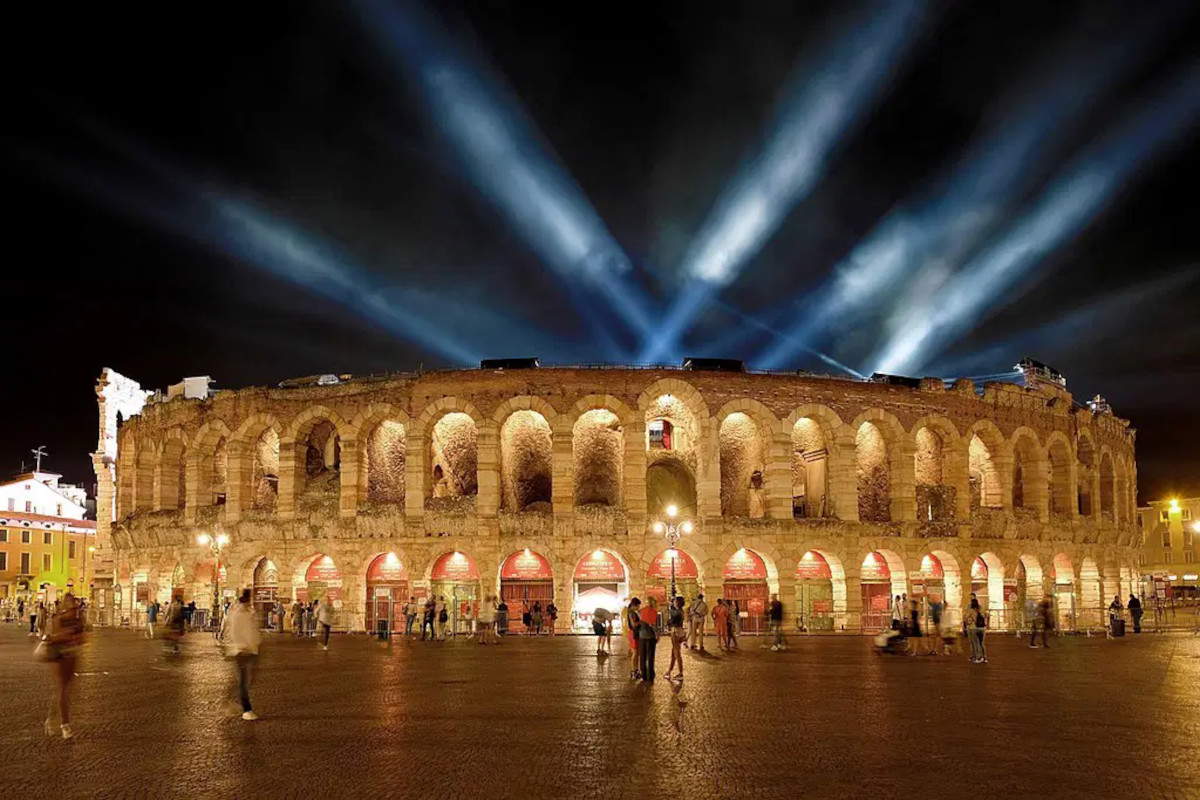
Built in the first half of the first century AD, the Arena is a hollow-structure amphitheater with an elliptical plan, capable of seating up to 30,000 spectators in Roman times. Built outside the Roman walls to facilitate spectator access and limit the influx into the city center, the structure is now within the historic center of Verona. Architecturally, only a short section remains of the original outer ring, the Ala, an imposing legacy of Valpolicella limestone, carved in ashlar on a single Tuscan-style architectural order. The amphitheater, bustling with people, was embellished with fountains and embellished with statues, of which only rare traces remain today, now preserved in the Archaeological Museum at the Roman Theater.
It is not known precisely when the structure began to decay, although clear signs of deterioration can be seen as early as the third century. It is plausible that spectacular activity continued during late antiquity, probably with a less central role for gladiatorial duels, which were meeting increasing hostility from Christian culture.
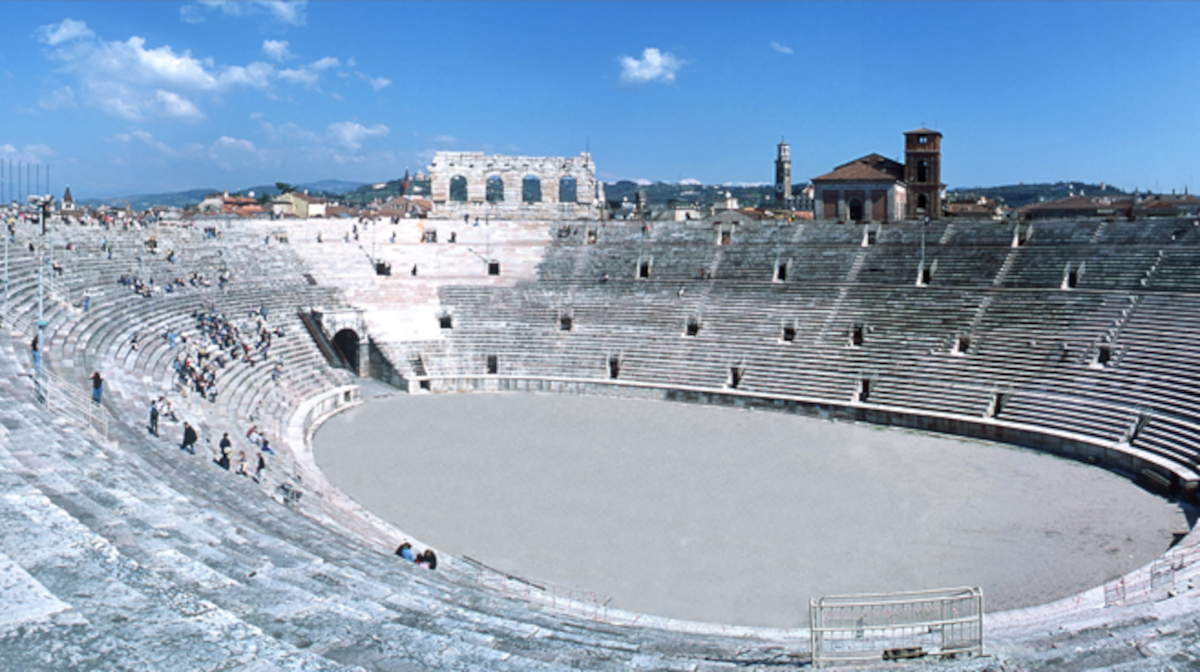
After the fall of the Roman Empire, the Arena experienced profound transformations. Under the reign of Theodoric (493-526 AD) part of the facade was in fact demolished for the defensive expansion of the city. In 1276, municipal statutes introduced penalties for those who caused damage or defiled the Arena, but the measures were not enough to prevent the amphitheater from becoming a refuge for criminal activities. Toward the end of the thirteenth century, it was also ordered that city prostitutes reside inside the ancient building, where they continued to ply their trade until 1537.
During the Renaissance, interest in the protection of the Arena became more concrete, including from an aesthetic point of view. Architects and scholars began to produce detailed surveys that testified to a renewed look at the monument. Meanwhile, many of its vaulted and outward-opening arches were occupied by artisans’ and merchants’ stores, transforming the spaces into a bustling economic center.
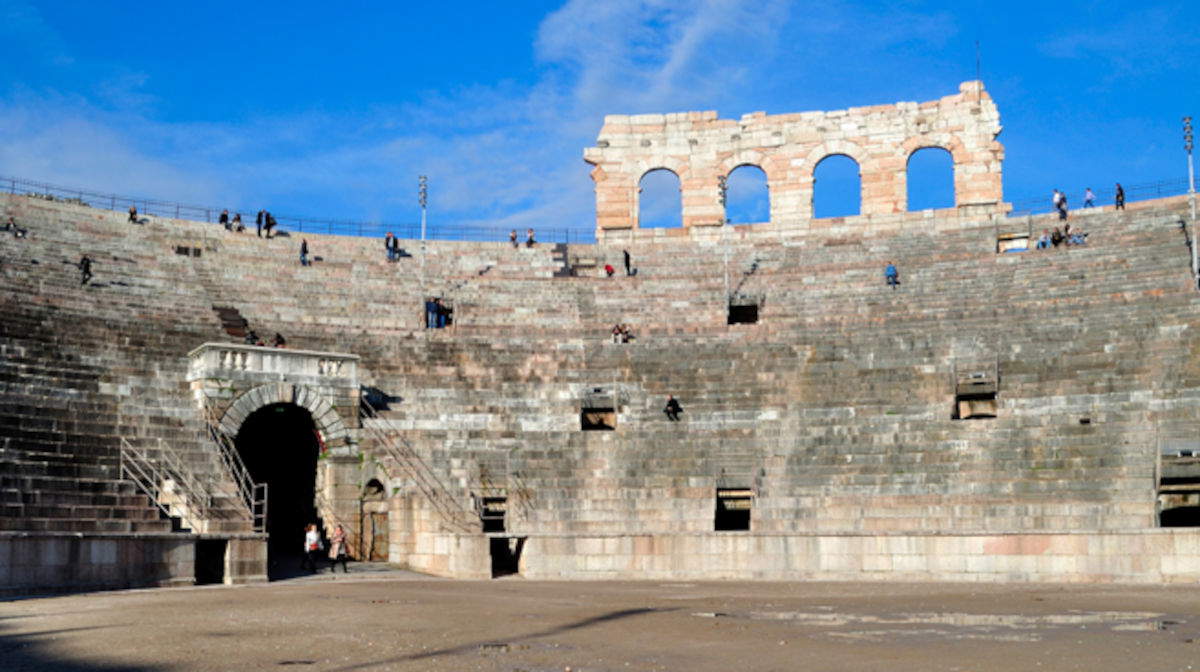
Performances continued over time, changing form: medieval duels were joined by tournaments promoted by Verona’s nobility and events organized to welcome prominent figures, both Italian and foreign. In 1713, for the first time, a wooden stage was built in the stalls to stage Scipione Maffei’s Merope. From then on, during the summer, the central ellipse began to host regular theatrical performances. But not only that. The Arena was also used for civic purposes: the so-called Pesa del Fieno, of which an iron rod dated 1733 preserved in archway 4 remains, perhaps represents the arm of a large scale. Among the many events hosted were also races, including with animals such as donkeys, circus shows, balloon ascents, and hunting parties, particularly against bulls. One of these was organized in honor of Napoleon Bonaparte.
The turning point came in 1913, when on the centenary of Giuseppe Verdi’s death, the Arena hosted Verdi’s Aida for the first time. From that moment, the tradition of summer opera seasons began, extending the capacity to 15,000 spectators and making the amphitheater one of the largest open-air theaters in the world.
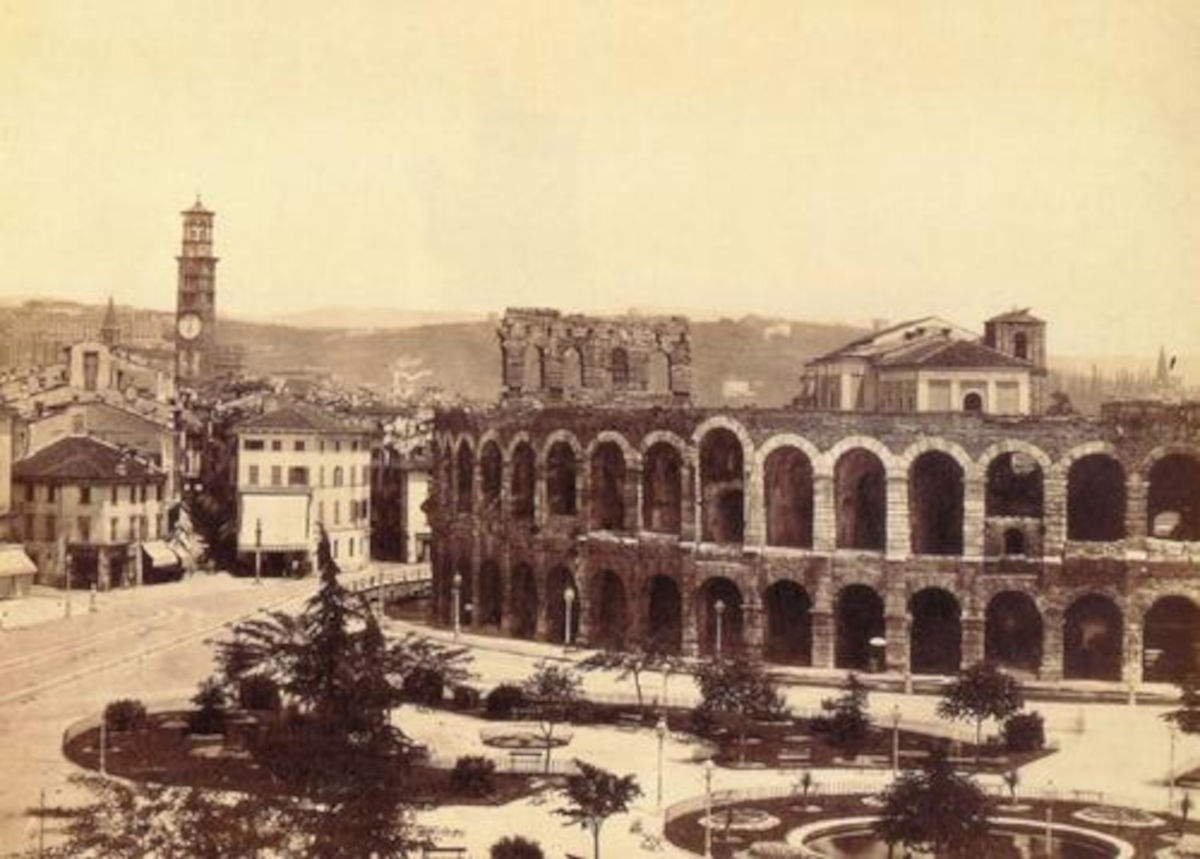
Inside, the Arena still maintains the typical division between arena and cavea: the former was the stage for the games, while the cavea accommodated the audience. Once separated by a podium with protective functions, the cavea was divided by horizontal walkways and accompanied by an upper portico covered by a wooden structure. Public use is guaranteed from Tuesday to Sunday, 9 a.m. to 7 p.m., excluding days with performances (April to October). During this season, theater set-ups restrict access but do not completely hinder visitation.
The Arena represents the historical and cultural identity of Verona. The current project aims to safeguard this dual soul: on the one hand, archaeological integrity; on the other, contemporary cultural vitality. The use of patronage through Art Bonus has made possible a significant private investment in public heritage.
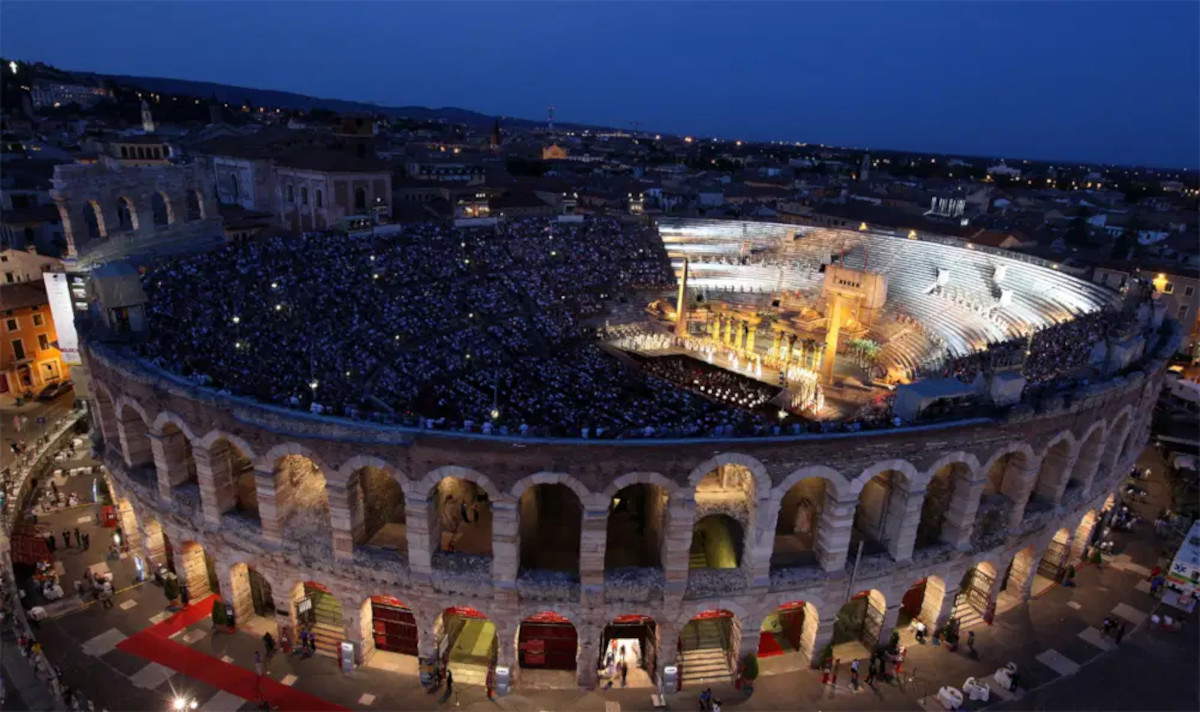
With the work completed, the Arena of Verona will be able to offer an improved experience for both tourists and spectators of major summer events. New plant solutions and conservative restoration will provide greater safety, comfort and accessibility without compromising the historic integrity of the structure.
The restoration enshrines a model of virtuous cooperation between public entities, foundations and businesses. It represents the continuation of a journey that began more than a century ago, when the Arena was transformed from a ruin into an opera stage, and today aims to strengthen its function as a theater of culture at the international level.
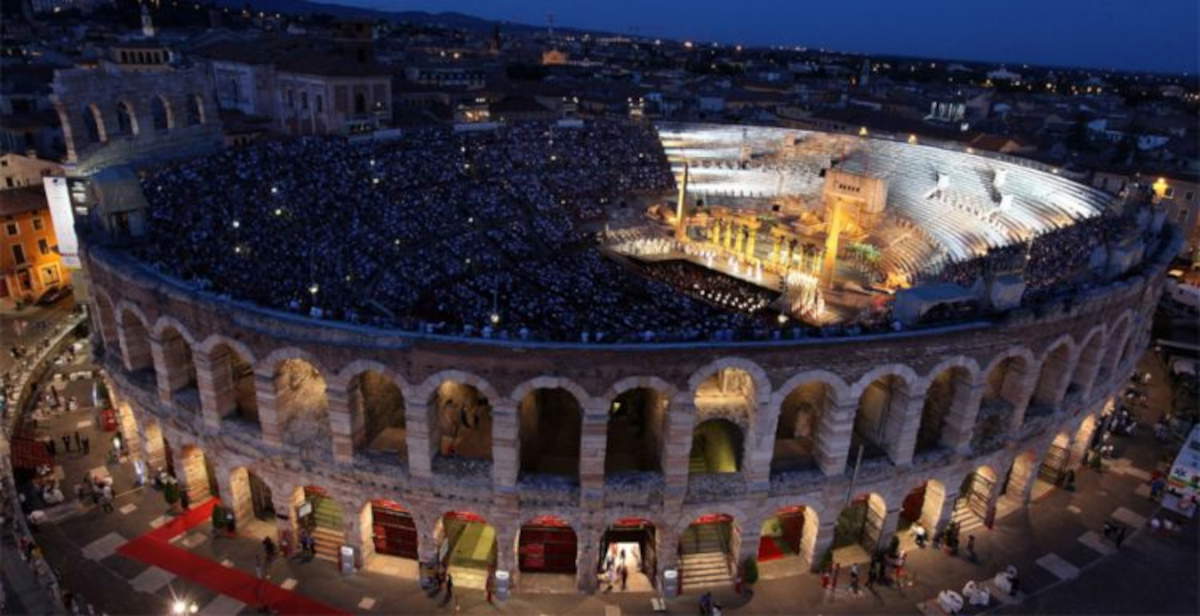 |
| Arena di Verona: restoration work with Art Bonus worth 14 million euros |
Warning: the translation into English of the original Italian article was created using automatic tools. We undertake to review all articles, but we do not guarantee the total absence of inaccuracies in the translation due to the program. You can find the original by clicking on the ITA button. If you find any mistake,please contact us.